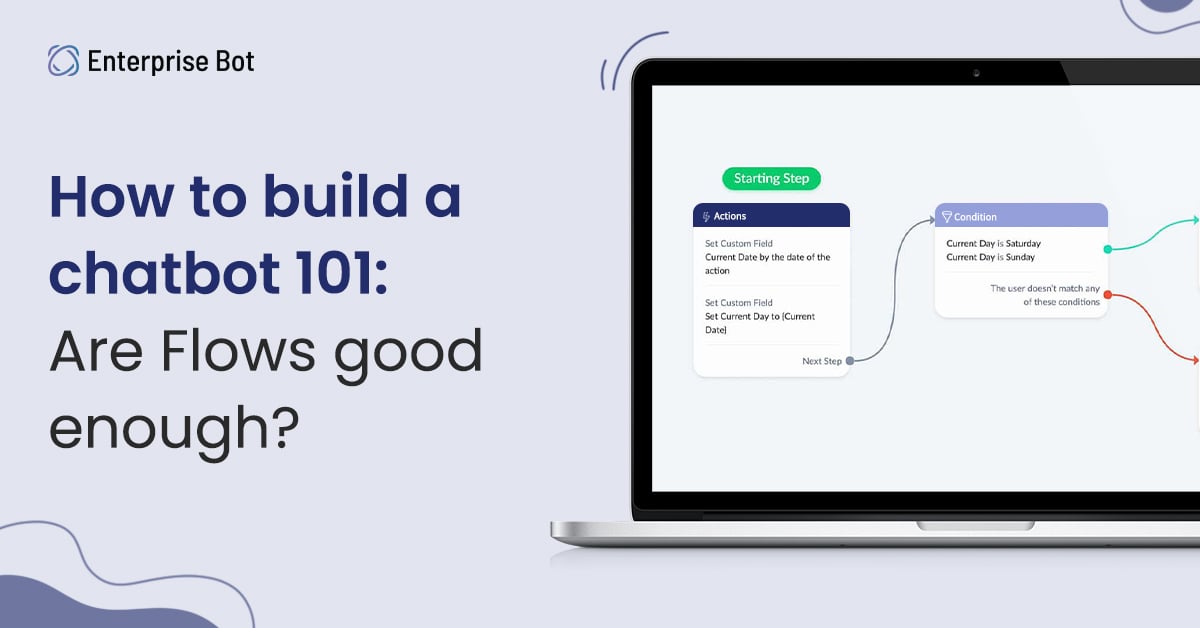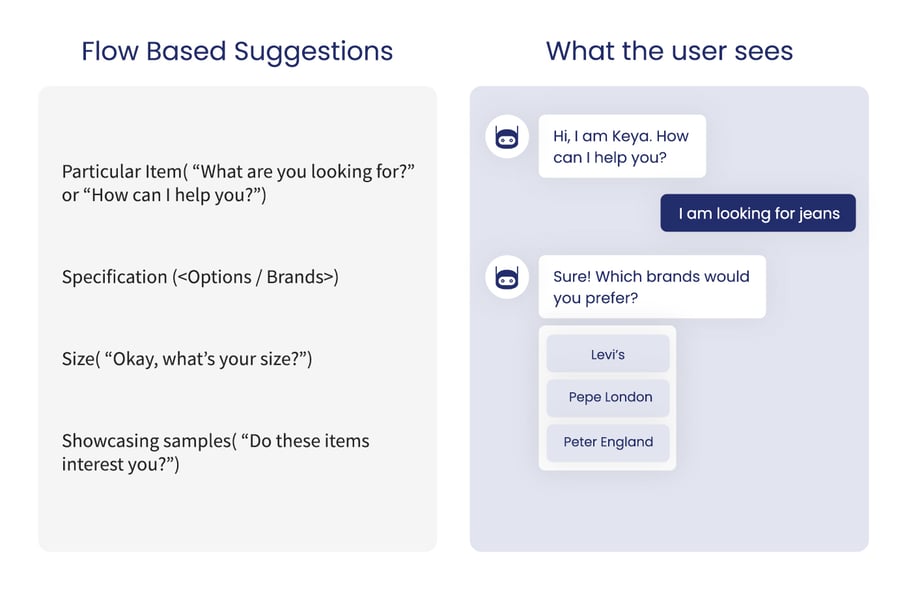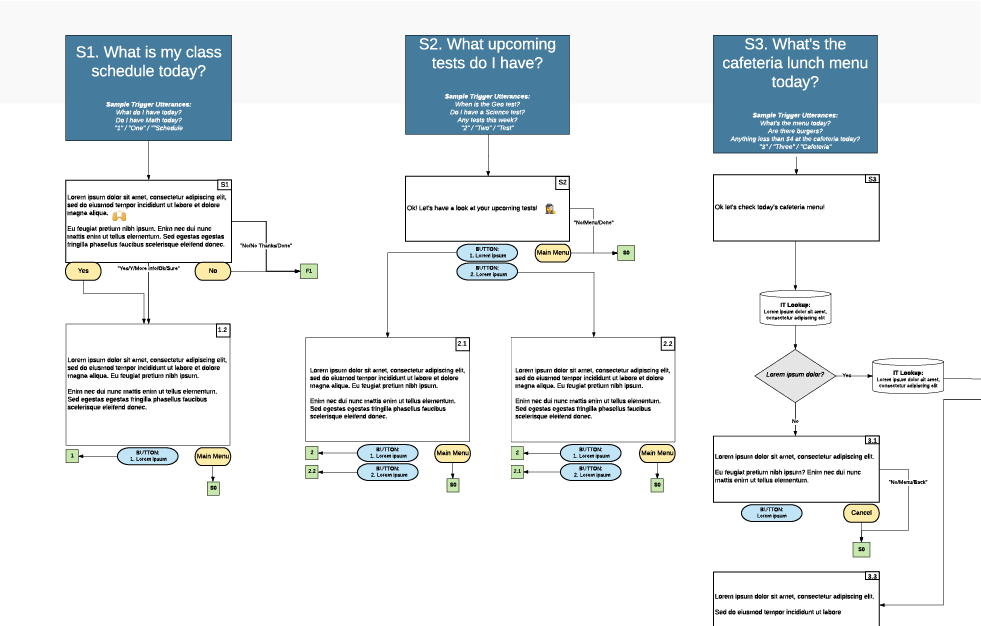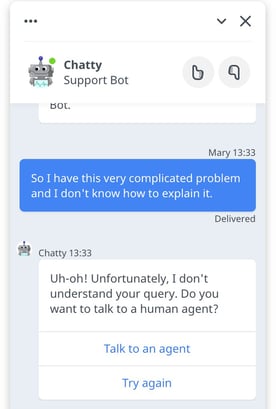Published : March 16, 2022
Table of Contents
Share this Article

The most ideal way to bootstrap your chatbot building process is to employ ‘Flows’, where the Bot undertakes a singular pathway to communicate with customers.
Organizations that do not have the monetary resources or time to research, build and deploy an AI-powered chatbot tend to rely on flow-based Bots. Since the chatbot using flows doesn’t possess any supporting ‘intelligence’, the chatbot will function within a predetermined sequence.
 To make it simpler, the chatbot merely guides the User/Customer through conversations (in the form of buttons or options) that are keyed in based on predefined parameters. For every selected response, there’s a defined pathway for the chatbot to pursue while communicating with the customer.
To make it simpler, the chatbot merely guides the User/Customer through conversations (in the form of buttons or options) that are keyed in based on predefined parameters. For every selected response, there’s a defined pathway for the chatbot to pursue while communicating with the customer.
For a better understanding, look at the image below. It shows the Conversational Flow Diagram (Vertical) for a Highschool Chatbot that answers commonly asked questions by the students and staff.

Source: Master of Code Playbook Conversational Design Series #2
It becomes evident that the chatbot follows a pre-defined conversational rule or ‘Flow’ to guide a user towards a particular destination. However, what happens when the customer initiates a topic outside of this flow?
Here, the context of the conversational flow comes into question. Whilst Flow-based chatbots only ask closed questions to ensure the customer stays within the defined context, unique customer situations emerge as a hurdle.
 Source: Google Images
Source: Google Images
Hence, Flow-based chatbots do not give the User/Customer any leg-room to receive additional information.
Flow-based chatbots are not accustomed to ‘Unnatural Flows’, like in the case of AI and Natural Language Processing (NLP) powered assistants. Since flow-based Bots follow a custom decision tree, it’s easy to maintain a lateral context in conversation. However, for chatbots using ‘Keywords’ in their Flow-based decision tree, an unknown word or phrase can lead to a breakdown in the conversational flow.
What about the Customer Experience? That’s a whole other can of worms.
A study by Salesforce showed that 23% of Customer Service companies are using chatbots to engage with individuals across diverse platforms and interfaces. And a statistics report by Userlike showed that 80% of the population have interacted with a chatbot at least once!
With more and more customers choosing to interact with chatbots, providing a seamless experience has become a driver for customer success.
Hence, chatbots must be able to provide help and support at all times. Answering a wide range of queries with meaningful information becomes a key metric for measuring chatbot effectiveness.
Flow-based chatbots fall short concerning EQ agility. Due to the strict pathway methodology followed by the chatbot, the assistants using a flow-based system often deliver empathetically poor responses or ‘Cold Responses’.
For chatbots in the Direct-To-Consumer (DTC) sector, maintaining an empathic and energetic tone paves the way for business conversions. In an environment where chatbots can directly impact revenue, seamless conversations become business-critical.
The very scale required to amass all of the required information, structure it into sequenced responses and chat out a flow is time intrinsic. And more time equals higher expenses.
And as the scale of chatbot interactions increases, the costs rise exponentially.
What if we told you that there was a cost-effective and scalable solution to beat this problem? A combination of AI-powered Conversational Intelligence and power-up flows, where conversation-flows get updated with just the click of a button.
Visit our website to learn more about how we’re helping organizations build and deploy chatbots in just 4 weeks.
You can also reach out to us to enquire about the product or understand how our suite of products can help your business.
Dufourstrasse 22,
8008 Zurich, Switzerland
L-148, Bhive Workspace, 5th Main Road, HSR, Layout Sector-6 Bangalore 560102
42-44, Bishopsgate,
London EC2N 4AH
8 The Green Ste A
Dover, De 19901
Copyright © 2025, Enterprise Bot